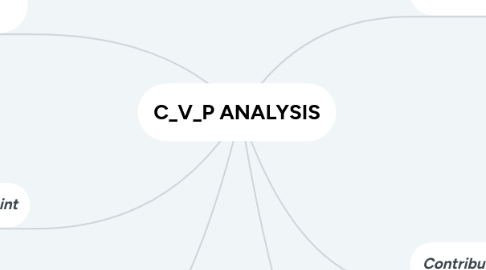
1. Apply the contribution margin in real common situation
1.1. Situation 1: Fixed cost increase, Quantity increase
1.2. Situation 2: Variable costs increase, Quantity increase
1.3. Situation 3: Advertising cost increase, selling price decrease, Quantity increase
2. Break even point
2.1. The break-even point (BEP)represents the sales amount—in either unit (quantity) or revenue (sales) terms—that is required to cover total costs, consisting of both fixed and variable costs to the company
2.1.1. In unit sales (Qbep)
2.1.1.1. Qbep= F/(p-V)
2.1.2. In sales dollar( TRbep= PxQbep)
2.2. Total profit at the break-even point is zero.
3. Target Profit
3.1. Q= (F+ target profit) / (P-V)
4. Contribution Margin (CM)
4.1. The difference between Total revenue and Variable costs
4.1.1. CM= Total revenue- Variable costs
4.1.2. CM(per unit)= Sale price (per unit)- Variable cost (per unit)
4.1.3. CM ratio = CM/ Total revenue
4.1.4. CM ratio (per unit)= CM(per unit)/ Sale price (per unit)
4.2. Symbols:
4.2.1. Saleprice (P)
4.2.2. Variable cost (V)
4.2.3. Fixed cost (F)
4.2.4. Quantity (Q)
5. Contribution Income Statement
5.1. Find out
5.1.1. Step 1: Total sale (PxQ)
5.1.2. Step 2: Variable cost ( VxQ)
5.1.3. Step 3: Contribution margin Qx(P-V)
5.1.4. Step 4: Fixed cost (F)
5.1.5. Step 5: Net income [Qx(P-V)]-F
6. Schedule of Cost of Goods Manufactured
6.1. Find out
6.1.1. Step 1: Direct material=[ Begin of raw material+Purchased material]- Ending raw material
6.1.2. Step 2: Cost of Goods Manufactured = Begin of Work in process+ Total manufactoring costs - Ending of Work in process

